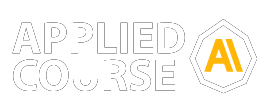Digital Logic Design
Category: Gate CSEDigital Logic Design
Category: Gate CSE₹4,000.00 ₹10,000.00
Instructor
Chekuri Srikanth Varma
A digital computer stores data in terms of digits (numbers) and proceeds in discrete steps from one state to the next. The states of a digital computer typically involve binary digits which may take the form of the presence or absence of magnetic markers in a storage medium , on-off switches or relays. In digital computers, even letters, words and whole texts are represented digitally.
Digital Logic is the basis of electronic systems, such as computers and cell phones. Digital Logic is rooted in binary code, a series of zeroes and ones each having an opposite value. This system facilitates the design of electronic circuits that convey information, including logic gates. Digital Logic gate functions include and, or and not. The value system translates input signals into specific output. Digital Logic facilitates computing, robotics and other electronic applications.
Digital Logic Design is foundational to the fields of electrical engineering and computer engineering. Digital Logic designers build complex electronic components that use both electrical and computational characteristics. These characteristics may involve power, current, logical function, protocol and user input. Digital Logic Design is used to develop hardware, such as circuit boards and microchip processors. This hardware processes user input, system protocol and other data in computers, navigational systems, cell phones or other high-tech systems.
Digital Logic is the basis of electronic systems, such as computers and cell phones. Digital Logic is rooted in binary code, a series of zeroes and ones each having an opposite value. This system facilitates the design of electronic circuits that convey information, including logic gates. Digital Logic gate functions include and, or and not. The value system translates input signals into specific output. Digital Logic facilitates computing, robotics and other electronic applications.
Digital Logic Design is foundational to the fields of electrical engineering and computer engineering. Digital Logic designers build complex electronic components that use both electrical and computational characteristics. These characteristics may involve power, current, logical function, protocol and user input. Digital Logic Design is used to develop hardware, such as circuit boards and microchip processors. This hardware processes user input, system protocol and other data in computers, navigational systems, cell phones or other high-tech systems.
Course Features
Lectures
95 Lecture
Duration
31+ Hours
Skill level
Easy
Language
English
Assessments
Yes

QUALIFICATION: Masters from IISC Bangalore PROFESSIONAL EXPIERENCE: 9+ years of Experience( Yahoo Labs, Matherix Labs Co-founder and Amazon)
Digital Logic Design
Category: Gate CSE₹4,000.00 ₹10,000.00
Instructor
Chekuri Srikanth Varma
15 Comment(s)
Loading...
© 2026 - All rights are reserved- AAIC Technologies pvt ltd

